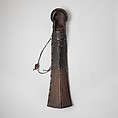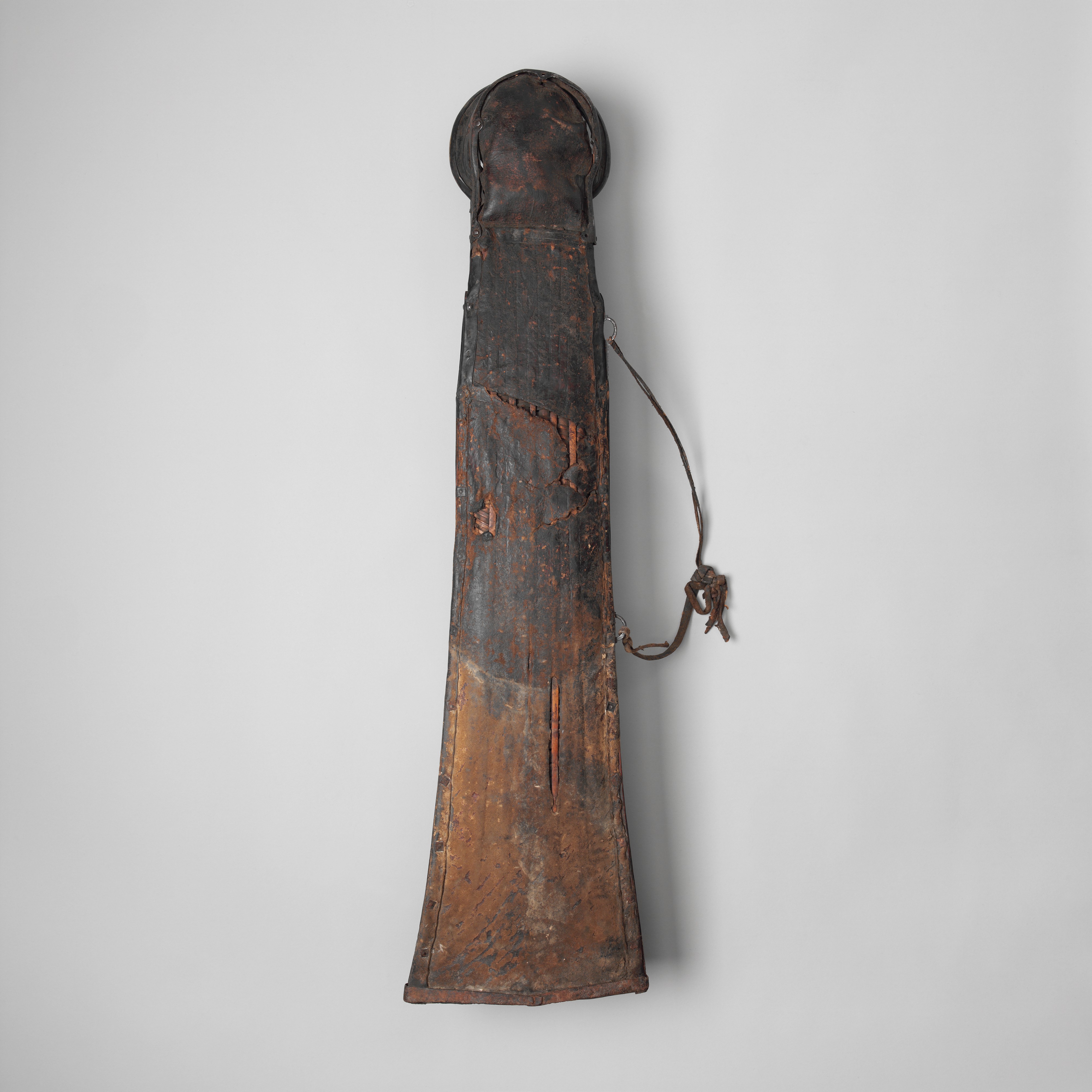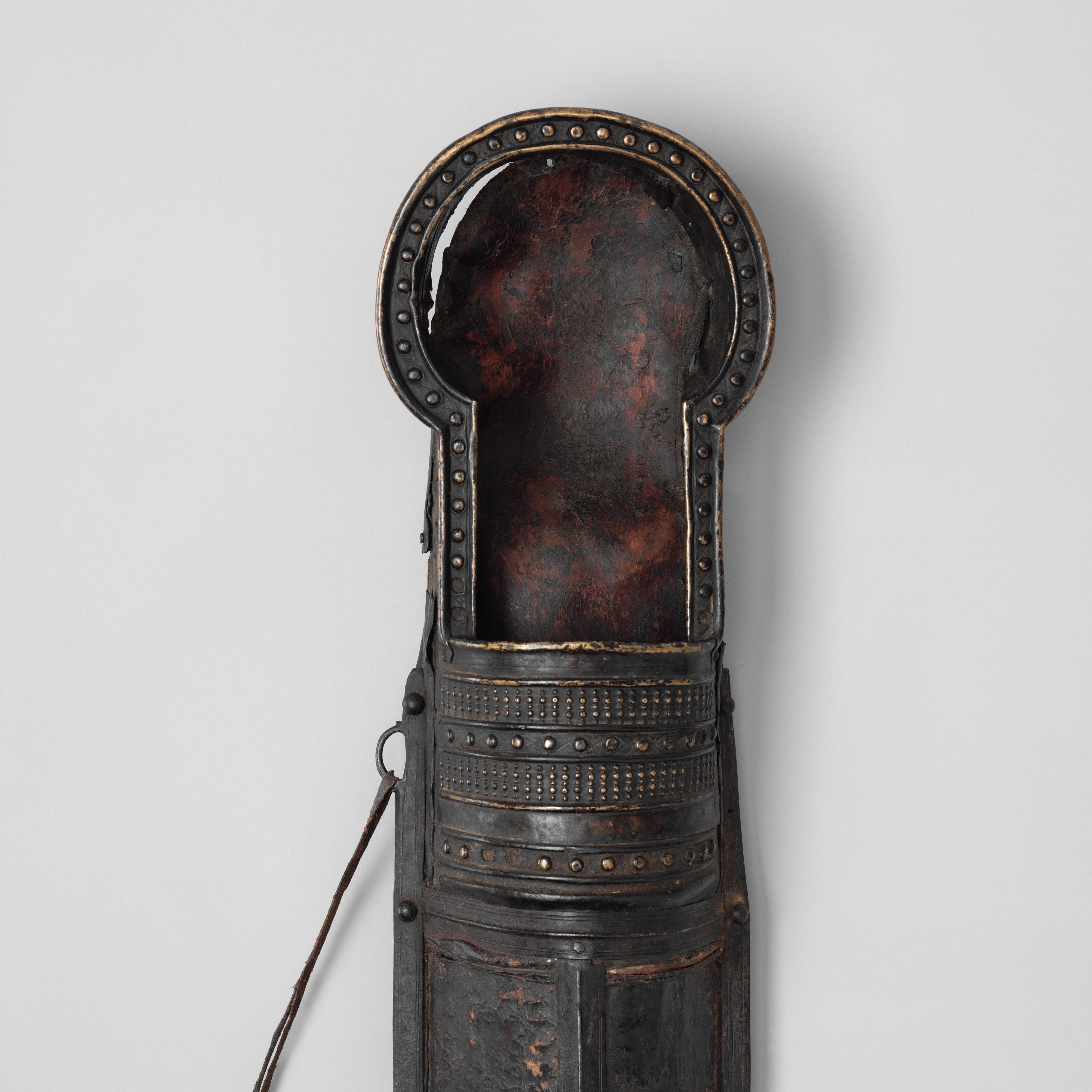Quiver (mda' shubs) with Accessory
Not on view
This quiver represents a very rare type, the basic form of which is depicted in works of art from China through Tibet and Central Asia from at least the seventh century until the end of the fourteenth century. The body is made of wicker or split bamboo, covered in leather, and reinforced by an iron frame. The top is covered by a keyhole-shaped cowl made of a copper alloy, which is open at the front for the insertion or removal of arrows. Quivers of this type are wider at the bottom because the arrows were placed in them with the arrowheads upward, unlike later types of quivers. Carbon-14 testing places this quiver in a date range of 1290–1410.
Due to rights restrictions, this image cannot be enlarged, viewed at full screen, or downloaded.
This artwork is meant to be viewed from right to left. Scroll left to view more.




